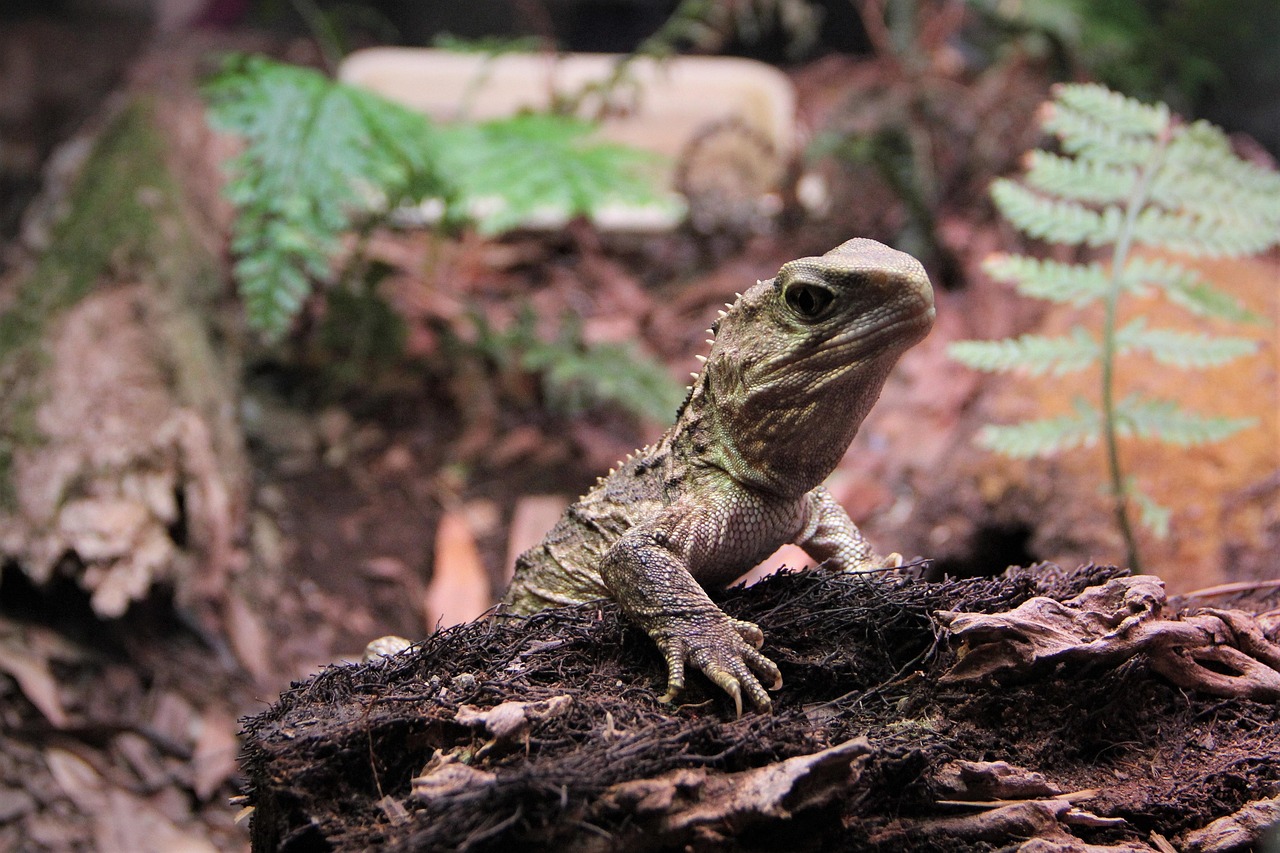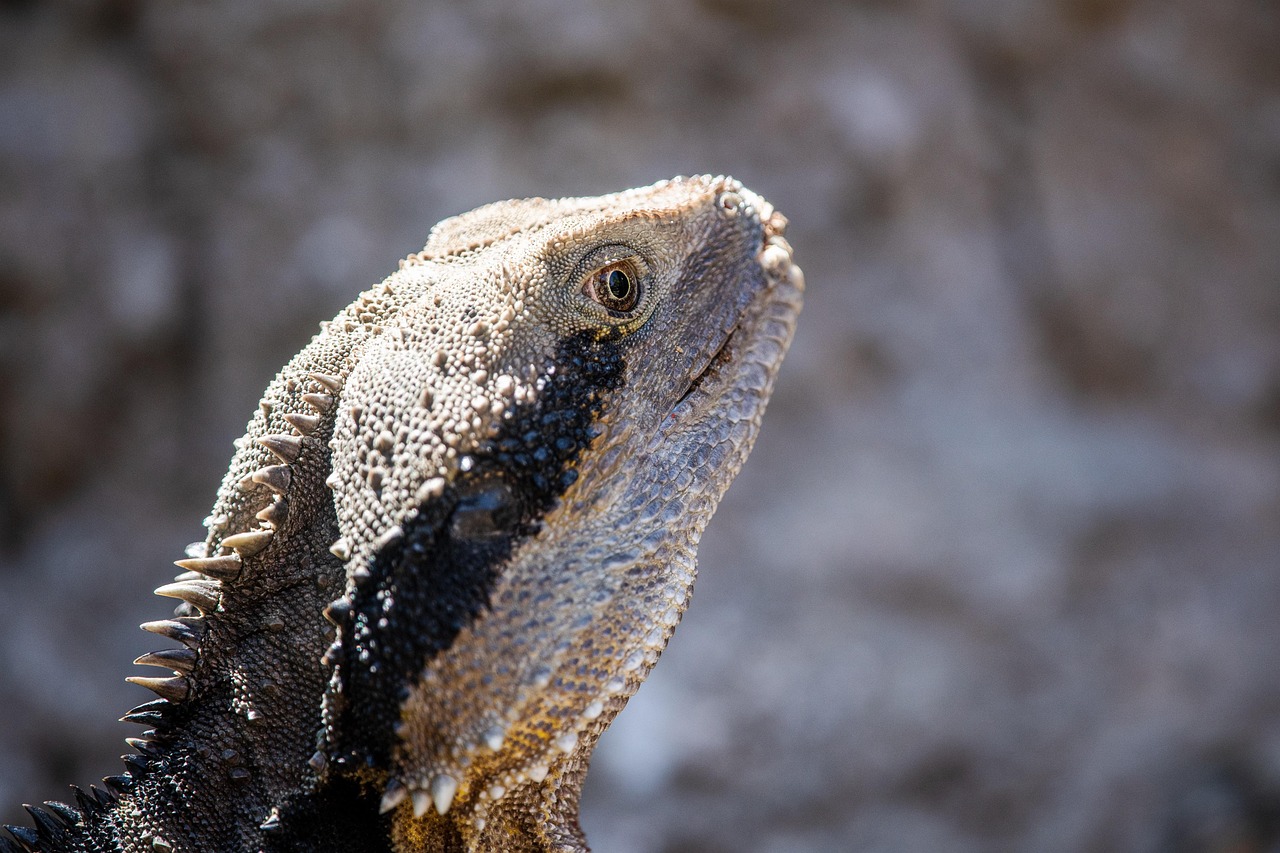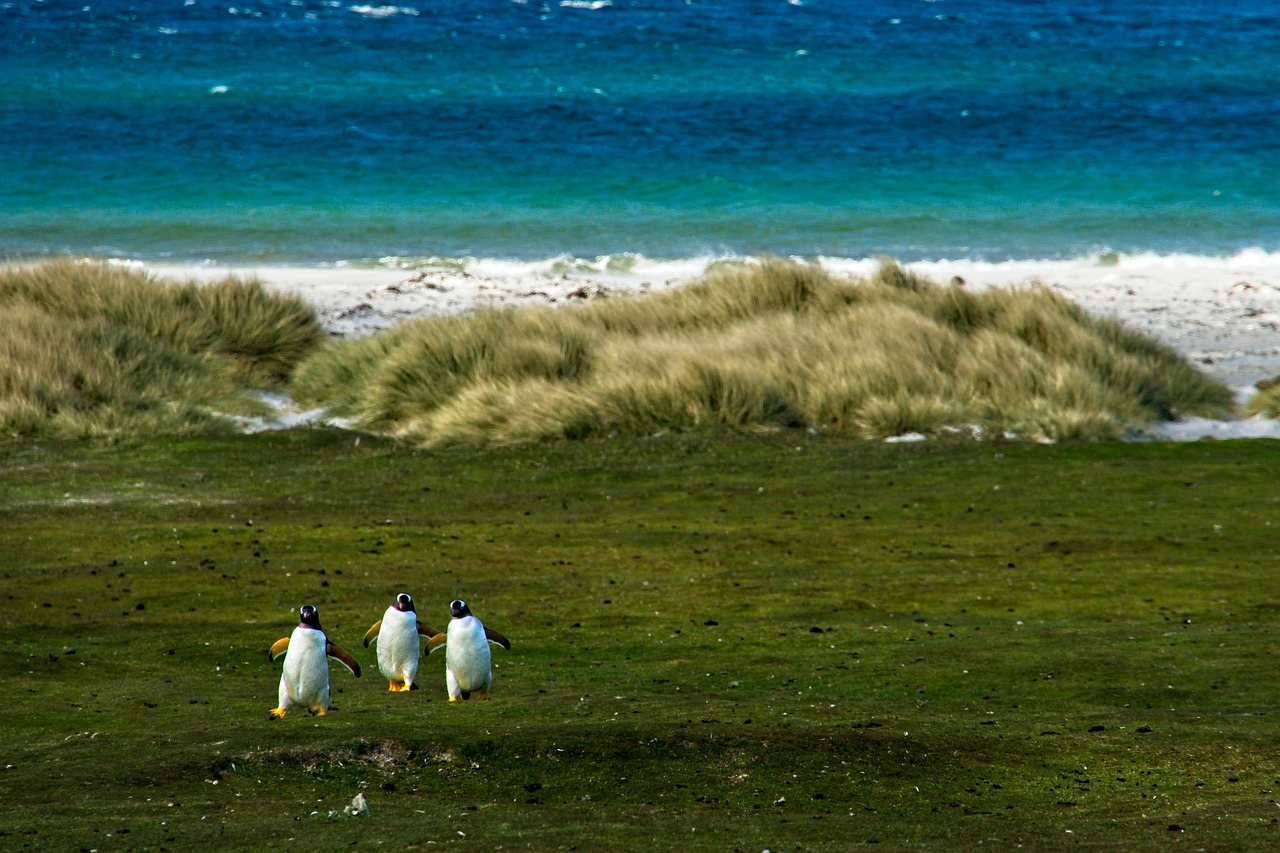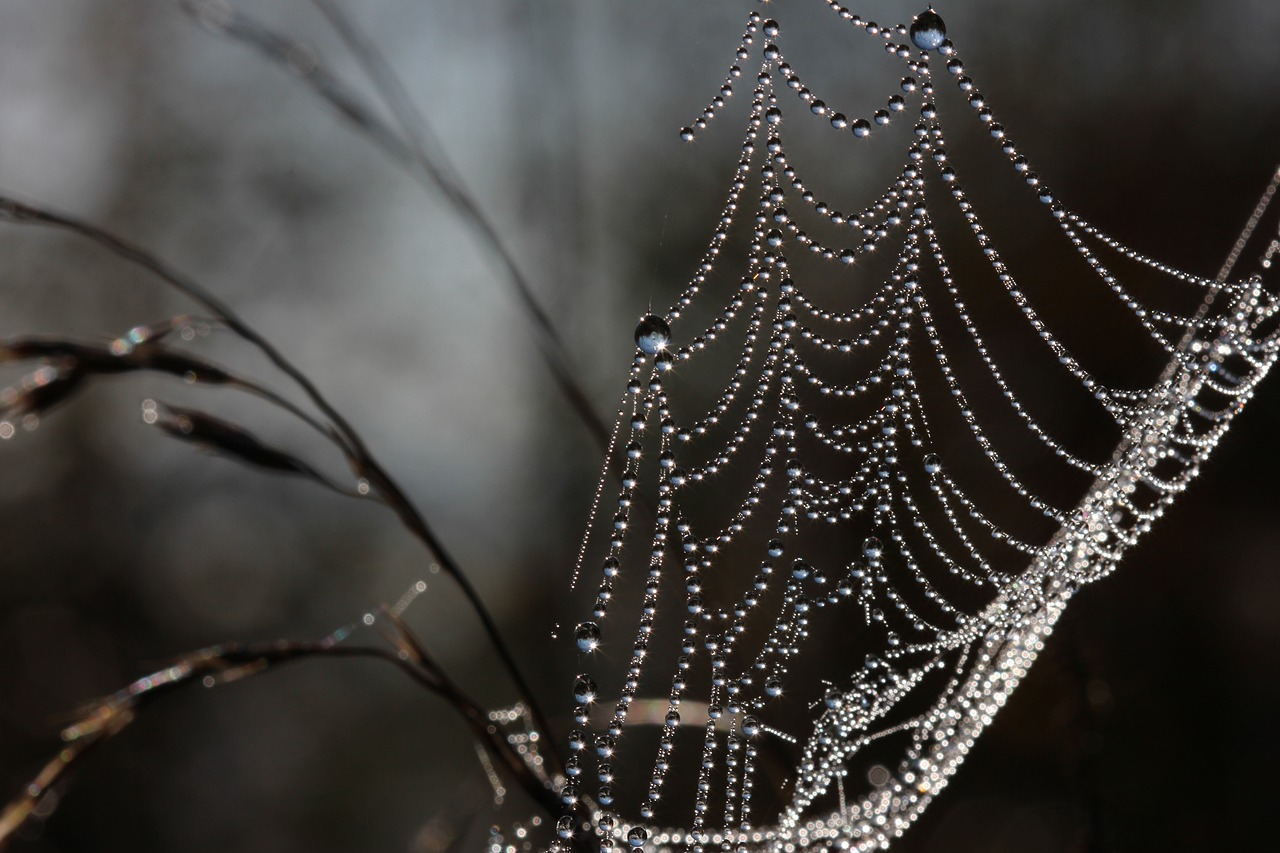Tuatara inhabit specific coastal regions of New Zealand, thriving in temperate climates. Their unique biome includes rocky outcrops, dense vegetation, and burrows in sandy soils. This environment provides essential cover and temperature regulation, which are crucial for their survival and reproduction.
Tuatara: A Glimpse into Their Habitat

The tuatara, a reptile endemic to New Zealand, is often referred to as a “living fossil.” This fascinating species has remained relatively unchanged for over 200 million years. Their habitat is not just a physical space but a complex ecosystem that supports their unique biological needs. Understanding this habitat is vital for the conservation of tuataras and their environment.
Historically, tuatara populations thrived in various environments across New Zealand. However, due to human activity and introduced species, their range has diminished significantly. Today, tuataras are primarily found on a few offshore islands and in specific reserves where conservation efforts are focused.
The tuatara’s habitat is characterized by several key features:
- Temperature Regulation: Tuataras are ectothermic, meaning they rely on external temperatures to regulate their body heat. Their habitat must provide both sunlit areas for basking and shaded spots to cool down.
- Vegetation: Dense vegetation, particularly native shrubs and grasses, offers cover from predators and helps maintain humidity levels in their burrows.
- Burrowing Sites: Tuatara create burrows in sandy soils, which serve as nesting sites and shelters from extreme weather conditions.
- Food Sources: Their diet mainly consists of insects, worms, and small animals, necessitating a habitat that supports a healthy ecosystem of prey.
The Unique Biome of Tuatara
The tuatara’s biome is distinct due to its isolation in New Zealand. This location has led to the evolution of unique ecological relationships that are not found elsewhere. For instance, the tuatara shares its habitat with various endemic species, including birds, insects, and plants that have adapted to coexist with them.
One of the most notable aspects of the tuatara’s habitat is its relationship with the surrounding environment. The islands where tuataras live often feature rugged coastlines with cliffs and rocky shores. These geographical features provide essential resources and protection against invasive species.
Additionally, tuataras are particularly sensitive to environmental changes. They thrive in stable climates with minimal fluctuations in temperature and humidity. Any disruption to their habitat can have significant impacts on their survival rates and reproductive success. Understanding these dynamics is crucial for effective conservation strategies.
| Feature | Description |
|---|---|
| Habitat Type | Coastal regions with rocky outcrops and sandy soils |
| Climate | Temperate with stable temperatures |
| Endemic Species | Unique flora and fauna that have adapted to this environment |
Overall, understanding the tuatara’s habitat is essential for ensuring the continued survival of this remarkable species. Conservation efforts focus on protecting their natural environment while fostering awareness about their ecological importance. By safeguarding these unique biomes, we can help maintain the delicate balance necessary for the tuatara’s existence.
Environmental Factors Influencing Tuatara Habitat
The habitat of the tuatara is significantly influenced by various environmental factors. These factors play a crucial role in determining the health and sustainability of tuatara populations. It is essential to understand how these elements interact within their unique biome.
Temperature and Climate
Temperature is one of the most critical factors affecting the tuatara’s habitat. Being ectothermic, tuataras rely on external heat sources to regulate their body temperature. The following aspects of temperature and climate are vital for their survival:
- Thermal Regulation: Tuataras require a specific range of temperatures to thrive, typically between 16°C to 24°C. Extreme temperatures can lead to stress and affect their ability to reproduce.
- Seasonal Changes: Seasonal fluctuations dictate the availability of food and suitable nesting sites, influencing the reproductive cycles of tuataras.
- Microclimates: Within their habitat, tuataras utilize microclimates for thermoregulation. Areas with dense vegetation provide shade, while sunlit spots are used for basking.
Soil Composition and Quality
The quality and composition of soil in the tuatara’s habitat are essential for burrowing and nesting. The following factors regarding soil are noteworthy:
- Soil Type: Sandy soils are preferred as they allow for easy burrowing. This feature is crucial for creating nests and shelters from predators.
- Moisture Retention: Soil that retains moisture helps maintain humidity levels in burrows, which is vital for egg incubation and the overall health of juvenile tuataras.
- Nutrient Availability: Healthy soil supports a diverse plant community, which in turn fosters a stable ecosystem that provides food sources for tuataras.
Flora and Fauna Interactions
The tuatara’s habitat is intricately linked with the surrounding flora and fauna. The interactions between these species create a balanced ecosystem that supports the tuatara’s needs.
Vegetation Types
The plant life in tuatara habitats includes native species that offer essential resources. Some key vegetation types include:
- Natives Shrubs: These shrubs provide cover from predators and serve as hunting grounds for tuataras.
- Ground Cover Plants: Low-growing plants help maintain humidity levels around burrows and provide shelter.
- Trees: While tuataras do not climb, trees contribute to the overall ecosystem by supporting insect populations that serve as food sources.
Predator-Prey Dynamics
The balance between predators and prey within the tuatara’s habitat is crucial for its survival. Some important dynamics include:
- Predation Risks: Introduced species such as rats and cats pose significant threats to tuatara populations. Effective management of these predators is essential for conservation efforts.
- Insect Populations: Tuataras primarily feed on insects, so a healthy insect population is vital for their sustenance.
- Competition: Tuataras may face competition for food from other native reptiles and birds, impacting their survival rates.
Sustainability and Conservation Efforts
The protection of tuatara habitats is critical for their future. Various conservation strategies are being implemented to ensure the sustainability of their unique biome. These efforts include:
- Habitat Restoration: Restoration projects aim to improve the quality of existing habitats by removing invasive species and reintroducing native flora.
- Protected Areas: Establishing protected reserves helps create safe environments where tuataras can thrive without human interference.
- Research Initiatives: Ongoing research contributes to understanding the ecological needs of tuataras, which aids in developing effective conservation strategies.
By focusing on these environmental factors and interactions within their habitat, we can better understand the complexities of tuatara survival and the measures needed to protect these remarkable reptiles.

Impact of Climate Change on Tuatara Habitat

Climate change poses a significant threat to tuatara habitats, affecting not only the temperature but also precipitation patterns and sea levels. Understanding these impacts is essential for conservation efforts aimed at preserving this unique species.
Temperature Increases
As global temperatures rise, tuataras may face several challenges:
- Thermal Stress: Higher temperatures can lead to increased thermal stress for tuataras, making it harder for them to maintain their body temperature. This stress can affect their metabolism and reproductive success.
- Altered Breeding Cycles: Warmer conditions may disrupt the timing of breeding cycles, leading to mismatches in food availability for hatchlings.
- Habitat Loss: As temperatures rise, suitable habitats may become less available, forcing tuataras to migrate or adapt to new, potentially less favorable environments.
Changes in Precipitation Patterns
Changes in rainfall patterns can have direct effects on the tuatara’s habitat:
- Soil Moisture: Reduced rainfall can lead to drier soils, impacting the moisture levels necessary for burrowing and nesting.
- Food Supply: Altered precipitation can affect plant growth, leading to reduced insect populations that tuataras rely on for food.
- Nesting Success: Insufficient moisture may impact egg incubation conditions, increasing the risk of egg failure.
Invasive Species and Their Effects
The introduction of invasive species is another critical factor influencing the tuatara’s habitat. These species can disrupt the delicate balance of the ecosystem and pose threats to tuataras.
Types of Invasive Species
Several types of invasive species have been identified as threats to tuatara populations:
- Mammalian Predators: Species such as rats, cats, and stoats prey on tuatara eggs and juveniles, significantly reducing their survival rates.
- Competing Species: Invasive plants and animals may compete with native species for resources, including food and nesting sites.
- Pathogens: Invasive pathogens can introduce diseases that native species, including tuataras, may not have immunity against.
Management Strategies for Invasive Species
To mitigate the impact of invasive species on tuatara habitats, several management strategies are being implemented:
- Eradication Programs: Targeted eradication programs aim to remove invasive predators from key habitats where tuataras are found.
- Monitoring and Research: Ongoing research helps identify invasive species threats and develop effective responses to manage their populations.
- Public Awareness Campaigns: Raising awareness about the impacts of invasive species encourages community involvement in conservation efforts.
The Role of Community in Conservation

The involvement of local communities is essential for the conservation of tuatara habitats. Community-led initiatives can enhance conservation efforts significantly.
Community Engagement Strategies
Effective community engagement strategies include:
- Education Programs: Education initiatives help inform local populations about the importance of tuataras and their habitats, fostering a sense of responsibility towards conservation.
- Volunteer Opportunities: Providing opportunities for community members to participate in habitat restoration and monitoring projects encourages active involvement.
- Cultural Significance: Highlighting the cultural significance of tuataras to Māori and other local communities can strengthen conservation efforts through traditional knowledge and practices.
The Impact of Eco-Tourism
Eco-tourism can also play a vital role in the conservation of tuatara habitats. Positive impacts include:
- Funding for Conservation Projects: Eco-tourism generates revenue that can be reinvested into conservation initiatives.
- Increased Awareness: Visitors learn about the unique ecology of tuataras, fostering greater appreciation and support for conservation efforts.
- Job Creation: Eco-tourism provides local employment opportunities, promoting sustainable economic development while protecting natural resources.
The collective efforts of community members, combined with effective management strategies, are crucial for ensuring the survival of tuatara populations in their unique habitats. By addressing environmental challenges and engaging local communities, we can work towards a sustainable future for these remarkable reptiles.
Challenges and Future Directions for Tuatara Conservation
As we look to the future, there are several ongoing challenges that must be addressed to ensure the continued survival of tuataras and their unique habitats. These challenges require adaptive management strategies and long-term commitment from conservationists, researchers, and local communities.
Climate Change Adaptation
One of the most pressing issues is climate change. As temperatures rise and weather patterns shift, tuataras will need to adapt to changing conditions. Strategies to consider include:
- Habitat Modeling: Researchers can use models to predict how changes in climate might affect tuatara habitats, allowing for proactive measures to be put in place.
- Genetic Studies: Understanding the genetic diversity within tuatara populations can inform efforts to enhance resilience to environmental changes.
- Assisted Migration: In extreme cases, relocating tuatara populations to more suitable habitats may be necessary to ensure their survival.
Ongoing Research and Monitoring
Continued research is vital for understanding the complexities of tuatara biology and ecology. Key areas of focus should include:
- Population Dynamics: Monitoring population sizes and distribution helps identify trends and informs conservation strategies.
- Disease Management: Researching potential diseases that could impact tuatara health is crucial, especially in light of increasing interaction with invasive species.
- Behavioral Studies: Understanding tuatara behavior in response to environmental changes can provide insights into their adaptability.
Final Thoughts
The tuatara stands as a testament to resilience and adaptation in the face of environmental change. Its unique habitat in New Zealand is not only home to this remarkable reptile but also a reflection of the intricate relationships between various species and their environments. To protect the tuatara, it is essential to recognize the interconnectedness of ecological systems and the importance of biodiversity.
Through collaborative efforts that involve local communities, conservation organizations, and researchers, we can create effective strategies that address both immediate threats and long-term sustainability goals. Eco-tourism, when managed responsibly, provides a path for economic growth while fostering awareness about the significance of preserving tuatara habitats.
As we move forward, the key takeaway is that the survival of the tuatara depends on our collective commitment to understanding and protecting its unique biome. By fostering respect for these ancient reptiles and their environments, we contribute not only to their conservation but also to the broader goal of preserving the rich biodiversity that our planet holds.
In conclusion, the challenges facing tuataras are significant but not insurmountable. With continued efforts in research, community engagement, and habitat protection, we can ensure that future generations will have the opportunity to learn about and appreciate these extraordinary creatures that have survived for millions of years.
